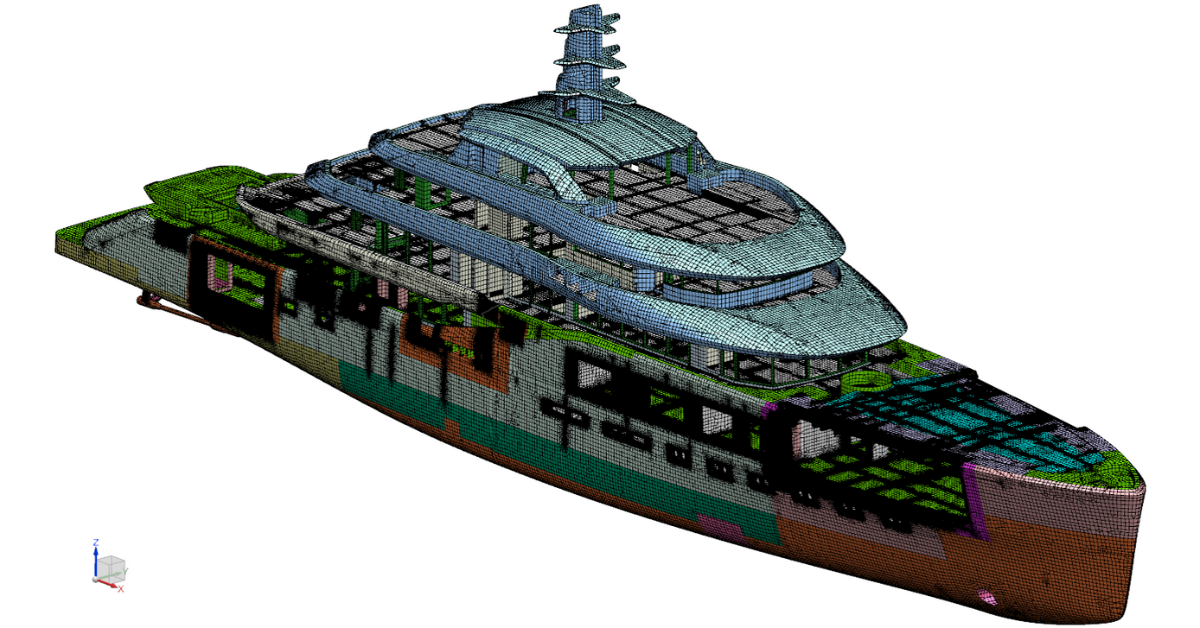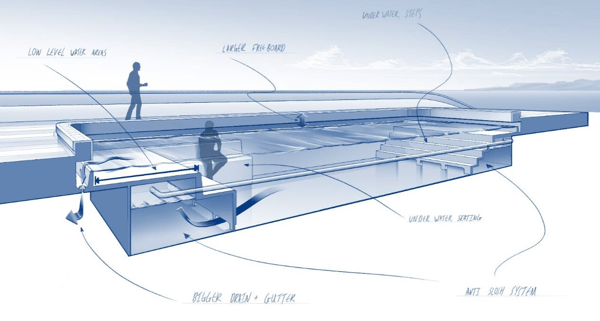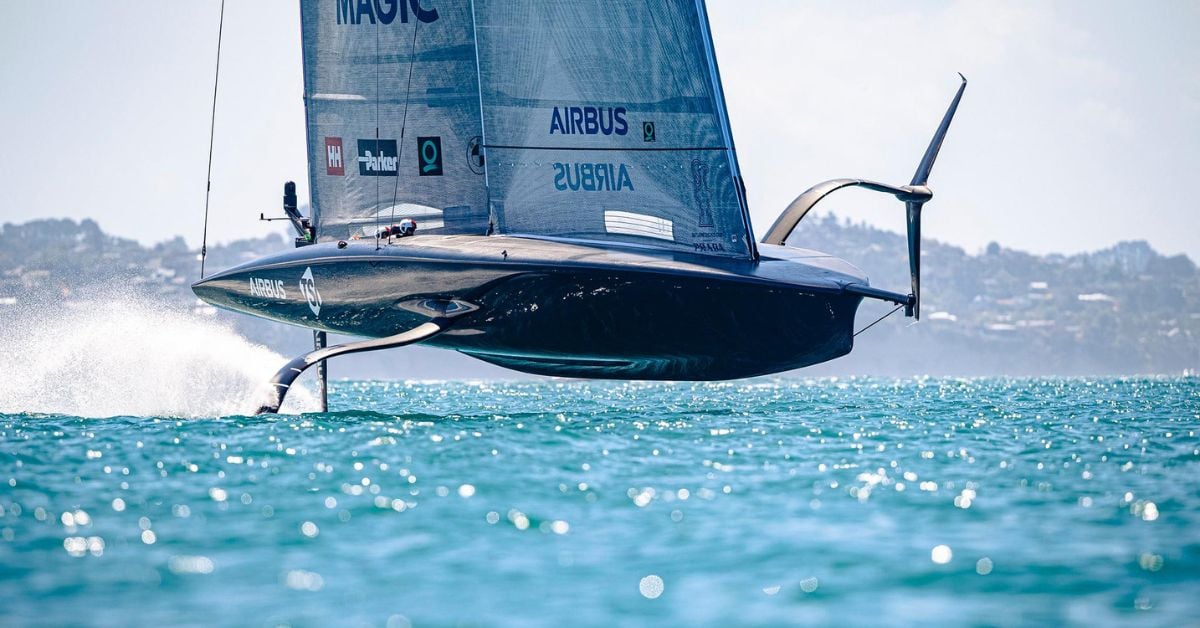
Yacht engineers discuss baffling mathematical challenges
The latest developments in the science of boat building are presented in lectures at the bi-annual HISWA symposium. University-level technical explorations to develop a pool slosh dampening machine are combined with engineers presenting their first experiences with the use of Artificial Intelligence in yacht design. The buzzword has struck the academics, too.
Project manager production at OceAnco, Jaap Kouwenhoven, explained how much effort it takes to organise the immense quantity of data in a way that the data can be managed by A.I. “We started implementing a data driven approach in 2016,” he looks back, “and were able to make a good start with A.I.” The complex systems and stakeholder expectations all included in one boat, count up to a great diversity of data. There are text documents describing what was agreed with the owner before designing a yacht. Then engineers make drawings and spreadsheets. Interior designers make renders and virtual spaces to present their ideas about volumes and colours in the cabins. It is one of mankind’s great skills to be able to comprehend all of these media and combine these into a cognitive image of a yacht. A.I. can explore and interpret loads of data much faster then humans can, but it can not search such a variety of sources and make the correct connections. It needs to be tought or learn what the data in different file formats actually means. Organising the data is a big challenge, as Kouwenhoven experienced. Of course, yards building large and complex yachts want to take benefit from A.I. to master their data faster and in a more comprehensive way. Previous solutions to problems that repeatedly complicate the design process, could be analysed in seconds by A.I. As long as the software knows what it needs to look for. A basic language interpretation model will not suffice. Hence the question that titled OceAnco’s presentation: Does A.I. know your company?
Virtual 3D in a blink
The design studio of Espen Øino is using A.I. to quickly generate preliminary yacht designs. From a database of previous designs and all the information that A.I. software like Siemens NX can find on the internet, a clever bot interprets the implications of a design brief and generates possible solutions. The designer’s creativity will encompass the solutions and shapes into an aesthetic yacht. When additional wishes and comments are posed about the preliminary design, A.I. is capable to generate feasable alterations to the design in an instant. Adrian Budde from the studio worked hard on creating the A.I. accessible database and developing the tool custom for Espen Øino. He uses Unreal Engine. “It generates highly realistic 3D environments, even including shading and reflections in the images. This helps to quickly review design solutions with the client representatives. Operational requirements like visibility from the bridge and access to machinery can also be reviewed. This tool not only makes it easy to design more aesthetic yachts, but also build better and safer ships.”
Dertermining fatigue
Design requirements are tightening. Lloyds Register, one of the leading class societies that evaluate and classify large yachts according to safety and quality standards, introduced the Structural Design Assessment tool (SDA) as well as the Fatigue Design Assessment (FDA) and Construction Monitoring (CM). Calculation methods are introduced to predict the strength of ships throughout their lifetime. The Lloyds assessment tools require a lot of math. Still, the class society will use these methods to determine if a yacht’s design will meet their standards. The method will even improve the structural capacities of yacht hulls, because thanks to this method, the overall strength can be calculated before construction starts and engineering can use the tool to improve the strength and resistance towards fatigue of their designs before construction. Especially calculating the fatigue that a yacht hull will suffer throughout it’s lifetime is almost impossible to calculate. Operational profiles of yachts may vary. The height and intensity of waves pounding in to the hull are not the same for any yacht. The goal of the FDA tool is to determine how much of the initial strength of hull will deteriorate over the lifetime of a yacht, caused by speeding through the waves, waves rolling in while at anchor or berthed, and by hauling in and out for trans oceanic transport. If the immense calculations (and assumptions) are done, a designer might want to rethink the structure to add lifetime to the yacht he perceives. After alterations, the outcome will go through the whole calculation process once more. Richard Villavicencio from Lloyds presented the calculation principles to the academics in the room, to prepare them to apply the assessments themselves, to know beforehand if their design will pass the new criteria. Catching up with the two presentation mentioned before: A.I. might just be the right help to do all this calculating.
Pool waves
Yacht designers and engineers that develop the solutions that make it possible to install all of the unthinkable items on a yacht, seem to like to break their brains over hyper complicated problems. A trio from Feadship / De Voogt Naval Architects is working to develop an anti-sloshing device. This should prevent the water in swimming pools and jacuzzi’s aboard large yachts to form unpleasant waves, or even dangerous waves as the resonating waves of a large pool might inflict the yacht’s stability. “The complexity of the pool sloshing phenomenon is a hydromechanics’ dream, if you like problems,” they write. First of all, the researchers affirm that the shape of a pool will affect the occurrence of waves most. To be sure that the size and shape of a pool will not cause resonation of the mass of water, the resonating frequency can be calculated. This is again quite complicated math. This method was used before. The engineers from De Voogt reason that avoiding resonance by pool design would limit the possibilities for pool dimension too much. Any shape of pool, as it would integrate into the yacht most aesthetically, can be protected against sloshing if a device in the water would cause counter waves. The patent for a device they invented is now pending. This is the Contrawave. It consists of chambers on two sides of the pool, enclosed by a moving wall. The chambers are filled with water at the same level as the pool, with an enclosed air chameber above water level. The air chambers are connected with an air duct. The whole system resembles the moving air pockets that create waves in public swimming pools. In water basin tests, the Contrawave anti sloshing device has shown to dampen waves in pools down to 25 percent of the waves without Contrawave. As soon as a client of the yard values the dampening of sloshing in the pool aboard his yacht, the peculiar invention of the engineers can prove it’s worth in real life (a billionaire’s real life, that is).

Design sketch of pool with Cintrawave system – thanks Levadou / Mouhandiz / Van Zon @ De Voogt Naval Architects
Header Image: Complete construction design of a yacht, thanks Villavicencio @Lloyds Register

.jpg?h=400&iar=0&w=1200)

